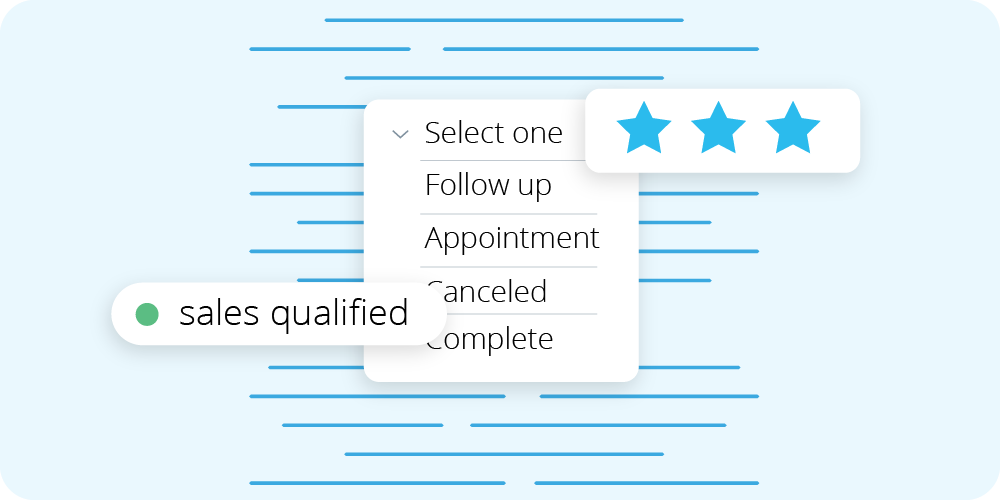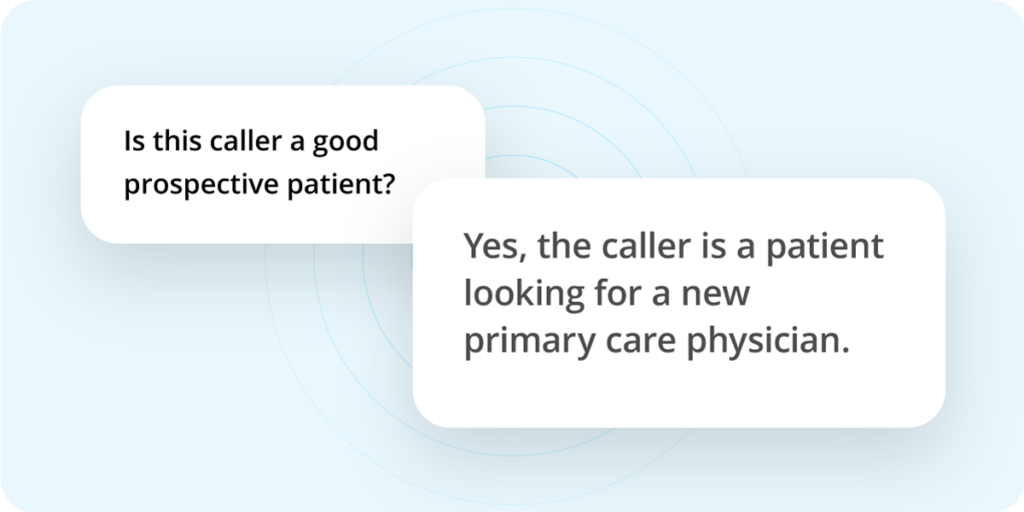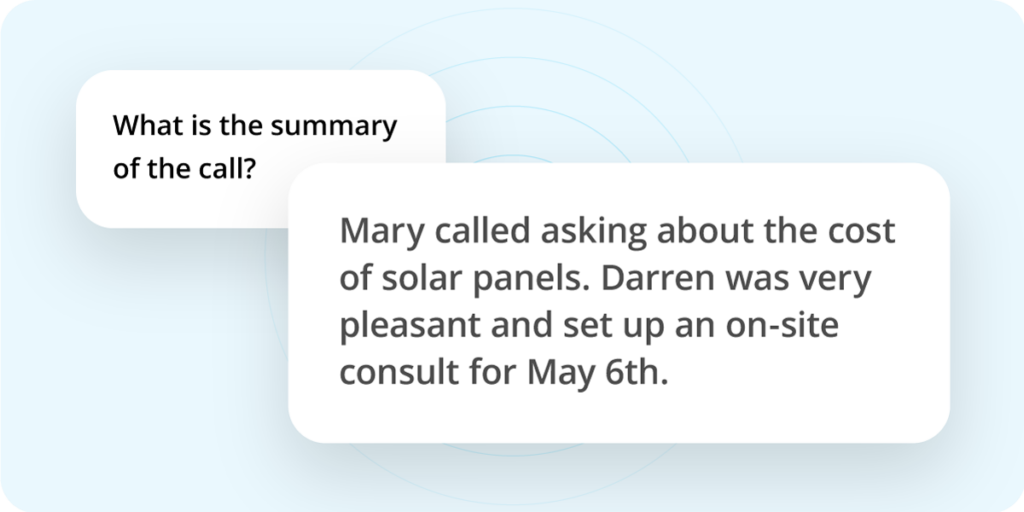How AI Is Transforming Call Tracking & Conversation Intelligence
Original Post by Chris Todd on EdgeLinking
Go to Google, go to Bing, go pretty much anywhere and you’ll see new AI tools to test. The call tracking industry is no different. But, while some industries are struggling to find a compelling way to use generative AI, there’s a very natural fit for products like CallTrackingMetrics. Generative AI amplifies the already incredibly valuable insights of call tracking and conversation intelligence. To see clearly how AI is transforming call tracking, let’s start with where modern call tracking stands without AI.
Why Use Call Tracking in the First Place?
Even without AI, call tracking provides insights that transform sales and marketing teams. It’s used to make campaigns, teams, and strategies better.
- Ad optimization: The core use case for call tracking is to accurately see how many leads your marketing team is creating, and which campaigns are doing it best. Then, use those insights to make changes to your campaigns to maximize your budget.
- Coaching & customer research: Use call recordings and transcriptions to spend time learning from your communications. Internally train your team to better sell over the phone, and better understand your customers through their own words to inform marketing messaging and targeting.
- Pipeline engagement: The best call tracking providers also give sales teams a way to engage with the leads being tracked. Customized routing to get leads where they need to go, scoring and tagging to segment leads, and outbound communications options for any follow up.
How Does AI Make Call Tracking Better?
AI is great at taking slow tasks and making them faster, and taking items off your team’s plate to free them up to do more strategic activities. In call tracking, AI supercharges transcriptions to make insights faster, optimization automated, and more.
Just like you might go straight to ChatGPT and ask it questions, you can ask AI about the content of a phone call. It analyzes the transcription, and produces an answer based on your prompt. The quick wins for call tracking companies are automatically generating call summaries, identifying caller sentiment, and qualifying calls. Like the best call tracking features, AI works best when you’re free to customize it to your strategy. Here are a few areas in conversation intelligence customers are using AI to transform their marketing and sales strategies:
1. Smarter, Automated Optimization
Google Ads is the number one channel marketers are looking to optimize with call tracking. The best approach to Google Ads: run ads, get conversions, let Google know about those conversions, and have Google find more conversions based on that data.
Without AI, most marketers aren’t willing to take the time to manually score every call so they use standard definitions to apply to every call, like any call over 120 seconds is a conversion. With AI, you can qualify and score automatically based on the actual conversation, and only send the highest quality conversions back to Google Ads to inform their own machine learning. All while your sales team is on to the next call.
2. Holistic Coaching

Sales coaching is a strategic part of building a team that can close valuable deals, faster. With call recordings, it’s a great way to sit down with your salespeople and listen to their approach to selling. Much like a football player might watch game film with their coach to spot mistakes and adjust.
With AI, you can easily pull out moments from a call to help agents improve their performance and close deals faster. Automatically fill custom fields for each call around things like:
- Did the salesperson ask open-ended questions?
- Did they bring up the current promo?
- Did they express empathy for the caller’s concerns?
- Were there clear next steps outlined?
With these questions generated instantly at the end of every conversation, you can dive right into making improvements instead of spending your time listening to every second of every call.
3. Insights at Scale

Just like Sales teams use their side of the conversation to make themselves better at selling, marketers can get insights from the customer side of the conversation to improve their marketing. Marketers use customer insights to better target campaigns and tailor messaging to what the audience actually cares about and how they speak about it.
With the right AI prompts you can instantly tag, segment, and score calls based on the content of the conversations. Which product were they interested in? What issues were they hoping to solve? Did they have anything they were confused about?
At the individual conversation level, you get amazing insights into how your customers speak and understand your brand. Then, aggregate the conversations and let AI point out some of the patterns and similarities between your best customers.
4. AI-Driven Follow Up

Insights are great, but the beautiful part of call tracking software is it gives you a direct path to follow up and nurture leads based on those insights.
With AI, at the end of a call, automatically categorize where in the funnel the caller falls. Still researching and needs marketing follow up? Send a text with a link to a downloadable resource. Agreed to a date for a demo on the phone? Send all the details to your CRM to manage activities and tasks. Identified an issue for a current customer? Schedule an outbound call from your customer service team.
AI can be used to identify the appropriate next step. And with robust call tracking software, it can trigger that next action as well, even writing an email or text for you to achieve your desired result.
AI and Conversation Intelligence a Natural Fit
There’s an endless amount of opportunities for marketers and sales teams to use AI. From SEO keyword research to outlining email campaigns. For conversation intelligence tools, it’s a no-brainer to take the insights you already get from call recordings and transcriptions and put them on autopilot. And with the customization of prompts, it’s an autopilot that surfaces better data so you can spend more time taking action and producing data-backed strategies.